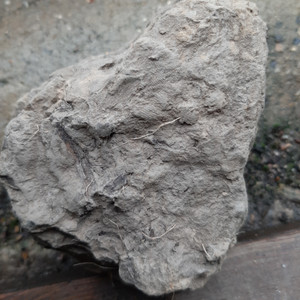A Lesson on Soil Management
- Tony Gent

- Dec 17, 2024
- 3 min read
Revitalising Soil Management: The Path to Resilient Farming

The past two years of extreme wet sowing conditions have brought into sharp focus how different soil management techniques respond to waterlogged conditions. Locally, successful drilling has primarily been achieved using two methods: traditional ploughing followed by power harrowing and drilling on lighter soils, OR no-till systems. This raises an important question: why are these methods so effective in such challenging weather?
Understanding Soil Structure and Water Management
The key lies in the preservation of soil aggregate size. Both ploughing and no-till protect these aggregates, albeit in different ways. Ploughing inverts the soil, compressing it slightly and creating drainage voids, which prevent excessive water absorption. No-till, on the other hand, leaves the soil structure intact. Over time, no-till soils develop a robust network of drainage channels thanks to natural biology, including worms and microbes. These channels efficiently displace water, often outperforming cultivated seedbeds in heavy rain.
Contrary to popular belief, no-till soils do not behave like a blotting paper, soaking up and retaining excessive water. Instead, they facilitate natural drainage through wormholes, decayed root channels, and biological activity. In contrast, heavily cultivated soils lose their structure, turning into clods and fine particles that impede proper water movement, leading to compaction and degradation.
Lessons from Morocco: A Climate-Specific Approach
While on a recent trip to Morocco, I observed how farmers in arid climates use light cultivation before seeding to retain precious moisture. This is the opposite of what we need in our wetter maritime climate, where later sowing and excess water are more pressing concerns. This stark contrast underscores the importance of tailoring soil management strategies to local climate conditions.
Addressing Surface Water Retention in No-Till
One common critique of no-till is surface water retention during heavy rains, which can lead to visible pooling, particularly on slight gradients. This occurs because no-till soils lack the rough surface of cultivated soils, which temporarily absorb water. To mitigate this, many no-till farmers use vertical soil loosening techniques with low-disturbance winged tines or fluted vertical discs. These interventions improve water infiltration without compromising soil biology. Importantly, this vertical tillage avoids soil inversion, preserving the natural biological processes essential for recovery and resilience.
The Problem with Over-Cultivation
Modern agriculture often relies on complex machinery to create seedbeds in one pass, using significant amounts of fuel. However, this approach can confuse dry, hard soil with compaction. A field with healthy biology doesn’t require robust tillage if no damage occurred during the previous harvest. Cultivation can often harm more than help, breaking down aggregates into fine particles that form clods when dry and mud when wet.
Healthy, biologically active soil naturally maintains voids and channels that drain well and retain structure. Over-cultivation destroys these benefits, restarting a cycle of degradation. Instead, leaving the soil undisturbed allows biological recovery to begin quickly, reducing costs and enhancing long-term productivity.
The Fallacy of “Halfway” Solutions
Some farmers turn to lighter minimum-tillage systems, hoping for a compromise between conventional and no-till. However, this approach often fails on both fronts. It neither fully restores natural biological processes nor provides the complete artificial structure management of conventional tillage. True soil recovery requires leaving residues on the surface, avoiding soil inversion, and maintaining active roots in the ground as much as possible.
Learning from the Past, Adapting for the Future
For millions of years, soil biology thrived without human intervention. Yet, modern intensive farming has left many soils in a degraded state. Advances in fertilisers, pesticides, and machinery have masked this decline, but today’s rising input costs and weather extremes expose the unsustainable of this model. Farmers are now at a tipping point, faced with the need to rebuild soil health to maintain yields and profitability.
Our journey into no-till began in 2006/7, inspired by innovative farmers in New Zealand and Argentina. These regions—facing economic pressures and reduced government support—adopted no-till as a more sustainable and cost-effective method. Recognising that our own reliance on subsidies was unsustainable, we embraced no-till as a forward-thinking solution.

Overcoming Early Challenges in No-Till
Transitioning to no-till wasn’t without challenges. Early on, we found that commercially available drills caused excessive soil disruption, compaction, and poor seed coverage, especially in wet conditions. We realised that tine-based drills were unsuitable due to their soil-disturbing nature. Instead, we developed the “GD” (Gent Disc) opener, a double-disc undercut system that places seeds with minimal disturbance, preserving soil structure and avoiding issues like slugs, chemical damage, and bird predication.
The Payoff of No-Till Farming
Sixteen years into our no-till journey, the results are clear: improved profitability, greater sustainability, and enhanced resilience to climate change. By prioritising soil biology and reducing artificial inputs, we’ve unlocked the potential of our land while contributing to a more sustainable future for agriculture.










Comments